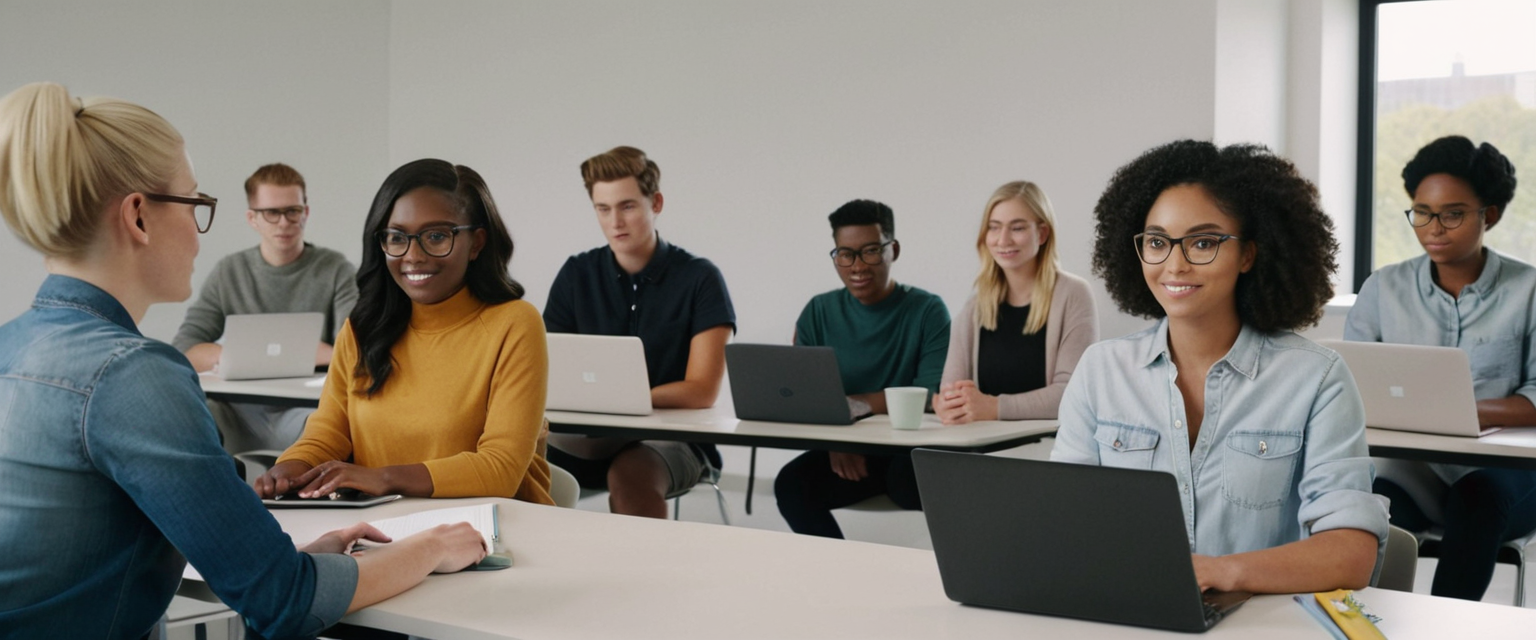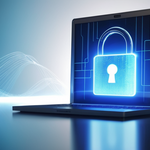
Internet filters deployed in schools and workplaces represent a fundamental tension in modern organizations between protecting users from harmful content and restricting legitimate access to information. The emergence of sophisticated technologies such as virtual private networks (VPNs) has complicated this landscape considerably, creating an ongoing technological arms race between institutional security measures and increasingly adept users seeking unrestricted access. This comprehensive analysis examines the multifaceted dimensions of institutional filtering systems, the role of VPN technology in circumventing these restrictions, the legal frameworks governing their use, and most importantly, strategies for implementing filtering policies that maintain institutional security and educational integrity while remaining respectful of user privacy, intellectual freedom, and legitimate information access needs. The core challenge facing educational and workplace administrators is developing approaches that acknowledge both the genuine need for protection from harmful online content and the equally genuine need for access to diverse information sources necessary for learning, research, and professional work. Rather than viewing filters solely as security tools or viewing attempts to bypass them purely as violations, this analysis suggests that more productive approaches emerge when organizations understand the underlying reasons for bypass attempts, implement transparent policies developed collaboratively with affected users, and invest in digital citizenship education alongside technological safeguards.
Understanding Internet Filters and VPN Technology in Educational and Workplace Contexts
Internet filtering systems represent a cornerstone of institutional technology governance in both educational and workplace environments. Schools and organizations implement web filtering software to restrict access to content deemed inappropriate, dangerous, or distracting, with the dual goals of protecting younger users from harmful material and maintaining productivity in professional settings. The technical infrastructure underlying these filters operates through multiple mechanisms, including keyword-based blocking, domain-level filtering, protocol inspection, and increasingly sophisticated machine learning algorithms that attempt to categorize websites based on their content, metadata, and user patterns. Traditional filtering approaches identify blocked content at the network level before it reaches a user’s device, examining DNS requests and blocking access at the gateway level where network traffic enters and exits an organization’s infrastructure.
The emergence of virtual private networks as a mainstream technology has fundamentally altered the filtering landscape in ways that merit careful consideration. A VPN operates by creating an encrypted tunnel that routes a user’s internet traffic through a remote server operated by a VPN service provider, effectively masking the user’s original IP address and location while encrypting all transmitted data. From a technical perspective, VPN technology was originally developed as a legitimate security tool allowing remote workers to safely access corporate networks and resources across public or untrusted internet connections. In enterprise environments, properly configured VPNs with appropriate acceptable use policies remain essential infrastructure for protecting sensitive business data and enabling secure remote work. However, in educational settings particularly, students have discovered that the same encryption and IP-masking features that make VPNs valuable for legitimate privacy purposes also enable bypassing school network restrictions.
The technical sophistication of modern filtering systems has escalated in response to VPN and proxy-based evasion techniques. Advanced institutional filters now employ in-browser filtering techniques that inspect data at the moment it is presented to the user, operating at the application layer rather than the network layer where encryption can obscure content. These advanced systems can decrypt secure HTTPS connections using legitimate decryption techniques, allowing the filter to examine encrypted content before it reaches the user’s browser. Additionally, some institutional security solutions now include specific keyword blocking for VPN applications and proxy services, attempting to prevent the installation of such software on managed devices. Organizations increasingly deploy multiple layers of protection, including DNS-based filtering that cannot be bypassed through local configuration changes, combined with device-level monitoring that can detect when users attempt to install VPN software or configure network settings to evade institutional controls.
Understanding the relationship between institutional filters and VPN technology requires recognizing that both represent legitimate technologies deployed with sometimes conflicting purposes. From an institutional perspective, filters serve the critical function of ensuring network security, protecting minors from harmful content, maintaining compliance with regulatory requirements such as the Children’s Internet Protection Act (CIPA), and maintaining productive use of organizational resources. The CIPA mandate specifically requires schools and libraries receiving federal E-rate funding to implement filtering technology that blocks three categories of visual content: obscene images, child sexual abuse material, and images deemed harmful to minors. This regulatory requirement has created a landscape where many educational institutions feel legally obligated to implement filtering systems, even when they recognize the systems’ limitations and negative consequences.
However, from a privacy and accessibility perspective, VPN technology and the increasing sophistication of circumvention techniques represent an important counterbalance to potentially excessive institutional control over information access. When filters are deployed in ways that genuinely protect educational environments from harmful content while allowing appropriate access to legitimate learning resources, they serve valuable purposes. But when filters become overly aggressive, systematically blocking access to educationally valuable information on controversial topics, or when they prevent legitimate research on sensitive subjects, VPN technology becomes a tool through which users reassert their right to access information. The tension between these perspectives forms the core ethical challenge that educational and workplace administrators must navigate carefully and transparently.
Legal and Policy Framework Governing Institutional Filters and VPN Technology
The legal landscape surrounding internet filtering in schools and workplaces involves multiple federal statutes, state regulations, and institutional policies that create a complex framework within which organizations must operate. The Children’s Internet Protection Act of 2000 represents the most significant federal mandate affecting school filtering practices. CIPA requires that schools and libraries receiving federal E-rate funding for internet access implement “technology protection measures”—in other words, content filtering software—that blocks obscene images, child pornography, and visual images deemed harmful to minors. However, it is important to note that CIPA is narrowly tailored and does not require schools to block constitutionally protected speech merely because some community members find it objectionable. Despite this legal limitation, many schools interpret CIPA requirements far more broadly than the statute mandates, leading to systematic blocking of legitimate educational content on controversial topics.
The Computer Fraud and Abuse Act (CFAA) of 1986 creates the primary federal statute governing unauthorized access to computer systems. The CFAA prohibits intentionally accessing a computer without authorization or in excess of authorization. This statute has significant implications for students who bypass school filters, as unauthorized access to school networks through filter evasion could theoretically constitute a federal crime under the CFAA, with sentences potentially reaching five years imprisonment for cases involving fraud or obtaining value through unauthorized access. However, the interpretation and application of the CFAA remains contested, with courts struggling to define precisely what constitutes “authorization” and whether students using their own devices on school networks with permission to access the network but without permission to bypass filters fall within the statute’s scope. Some students have been falsely told that using a VPN on school wifi constitutes a felony, though this remains legally uncertain and depends on the specific circumstances and the institution’s policies regarding what constitutes authorized use.
Acceptable Use Policies (AUPs) form the primary policy mechanism through which schools and workplaces communicate filtering rules, restrictions, and consequences to users. These policies typically outline what is and is not permitted regarding internet use on institutional networks and devices, specify which resources are available for work or educational purposes, describe monitoring practices, and detail consequences for policy violations. Ideally, AUPs are developed collaboratively with input from affected stakeholders including students, teachers, IT staff, administrators, parents, and union representatives, ensuring that policies reflect the actual needs and concerns of the community rather than being unilaterally imposed. However, in practice, many schools present AUPs as documents to be signed rather than genuinely negotiated agreements, particularly with student populations who have little choice but to accept them to access educational resources.
The AUP should explicitly address VPN policy, as students are often genuinely unaware that using VPN applications on school networks violates policy unless this is clearly communicated. Best-practice AUPs explain not just what is prohibited but also why policies exist, acknowledging both the legitimate security and pedagogical reasons for restrictions while also recognizing student concerns about privacy and access to needed information. Some AUPs now explicitly note that VPN use to access blocked district educational resources such as learning management systems violates policy, while potentially allowing some limited VPN use for legitimate privacy purposes, creating more nuanced approaches than blanket prohibitions. The presence or absence of clear, comprehensive, and collaboratively developed policies significantly affects whether students perceive filtering restrictions as legitimate institutional requirements or as arbitrary censorship deserving of circumvention.
State laws and local regulations add additional complexity to the filtering landscape. Some states have enacted their own filtering mandates that go beyond federal requirements, while others have passed laws protecting intellectual freedom or restricting the scope of permissible filtering. Nevada’s regulations, for example, are integrated into school district policies requiring that filtering comply with legal requirements including FERPA (Family Educational Rights and Privacy Act), CIPA, COPPA (Children’s Online Privacy Protection Act), and state data protection statutes. The interaction between federal, state, and local requirements means that schools in different jurisdictions face meaningfully different legal obligations regarding what must, can, or cannot be filtered.
From a privacy protection perspective, state laws and federal statutes including FERPA and the Electronic Communications Privacy Act establish rights regarding the privacy of educational records and electronic communications. The irony that institutional filters often violate privacy by logging and monitoring user activity while claiming to protect minors creates fundamental legal and ethical tensions. Some filtering systems employ decryption techniques allowing them to monitor activity on secure HTTPS connections, effectively compromising the privacy protections those encrypted connections were designed to provide. Guidelines from the American Library Association (ALA) specifically recommend that libraries and schools should not enable decryption on filtered devices, recognizing the privacy implications of such monitoring. Yet this recommendation is frequently ignored by organizations prioritizing comprehensiveness of filtering over user privacy.

Why Individuals Bypass Filters: Understanding Motivations and Practical Reasons
Examining why students and employees bypass institutional filters reveals that bypass behavior is not monolithic and stems from diverse, often legitimate motivations that deserve serious consideration in policy development. Research indicates that students bypass filters for multiple distinct reasons, ranging from accessing genuinely harmful content to circumventing overly restrictive policies that block educationally valuable resources. Distinguishing among these different motivations is essential for developing proportionate and effective institutional responses.
A significant portion of filter bypass attempts stem from the reality that institutional filters systematically overblock legitimate educational resources. The American Library Association and digital rights organizations extensively document that filters consistently both over- and underblock content, preventing access to important information while sometimes failing to block genuinely inappropriate material. Students attempting to access resources for legitimate research, homework assignments, or personal interests frequently encounter filters blocking content they need. Examples abound: a student researching the legalization of cannabis for a debate team project cannot access legitimate policy analysis and research materials because the filter categorizes anything mentioning “drugs” as inappropriate. A high school student researching sexual health and reproduction to understand their own development cannot access educational resources on websites like Planned Parenthood that are blocked by filters categorizing them as inappropriate. Students researching LGBTQ+ issues encounter filters that systematically block support resources and educational content about sexual orientation and gender identity, based on community objections to such topics rather than genuine harm concerns. These examples illustrate that for many students, bypassing filters represents an attempt to access information they have legitimate reasons to need, information that is legally protected speech, but that has been blocked due to overreaching filtering policies.
The technical reality that filters are imperfect and susceptible to miscategorization creates additional motivation for bypass attempts. Many websites are incorrectly categorized, leading to situations where educationally valuable websites are blocked while similar sites discussing identical topics remain accessible. A history website discussing a particular political movement or ideology might be blocked as “politically objectionable” when other websites discussing the identical topic are not blocked, creating obvious inequities in information access. When students discover that they can access similar information through proxy websites or by searching for different sites, they reasonably question whether the filter is actually serving legitimate protective purposes or whether it reflects institutional censorship of particular viewpoints.
Beyond educational access concerns, some students bypass filters to access entertainment content including streaming video, social media, and online games during breaks and free time. Research indicates that 80.8 percent of employees who bypassed workplace firewalls reported doing so during breaks, suggesting that motivation often involves stress relief and mental breaks rather than work avoidance. Similarly, students using VPNs to access YouTube, TikTok, Instagram, or gaming sites during lunch and study hall often face minimal academic consequences if caught, and the behavior seems to reflect normal adolescent desires for entertainment and social connection during breaks rather than any serious misconduct. This motivation, while violating institutional policy, reflects entirely normal human desires to take mental breaks and connect socially, and institutional responses should arguably be proportionate to this reality rather than treating such bypass attempts as equivalent to accessing genuinely harmful content.
Some students and employees bypass filters because doing so is technically possible and represents an intellectual challenge or means of asserting autonomy in environments where they otherwise have limited control. Adolescents in particular are developing autonomy and independence, and for some, bypassing filters becomes a way to exercise agency in a highly controlled institutional environment. Research on workplace filter bypassing found that 45.9 percent of employees who bypassed restrictions did so because they didn’t have enough work to complete, while 25.1 percent accessed restricted sites while procrastinating or working on side projects. These bypass motivations reflect not necessarily problematic use of restricted sites but rather time management and work allocation issues that filtering technologies alone cannot address.
A subset of bypass attempts involves accessing genuinely inappropriate content, and this group requires serious institutional attention. Some students use VPNs and proxies to access adult material, gambling sites, or other content clearly inappropriate for their age and educational environment. For this subset, filters serve important protective functions and attempts to circumvent them warrant institutional response. However, this group likely represents a minority of bypass attempts, and effective institutional policy must distinguish between genuine harm concerns and other bypass motivations.
Particularly important is understanding that personal circumstances and institutional failures sometimes drive bypass behavior. When school wifi is unreliable or unavailable for legitimate educational uses, students resort to VPNs to access the learning management systems and educational resources they need. When institutional policies prevent access to resources students genuinely need, students reasonably bypass restrictions. When students lack transparency about why specific sites are blocked or are given inconsistent explanations for filtering decisions, they become skeptical of institutional motives and more willing to circumvent policies. These situational factors suggest that reducing bypass attempts requires not just technological enforcement but addressing the underlying reasons why students feel motivated to bypass filters.
Methods of Filter Evasion and Institutional Detection Technologies
Understanding the specific technical methods through which individuals bypass institutional filters is essential for appreciating both the sophistication of modern filter-evasion techniques and the fundamental limitations of technological approaches to governance problems. The arms race between filter evasion methods and institutional detection technologies demonstrates that purely technical solutions have inherent limitations and that sustainable approaches require addressing underlying motivations and policy concerns.
Proxy websites represent among the oldest and most straightforward filter evasion techniques, operating by routing a user’s web requests through an intermediary server so that the user appears to be accessing websites from that external server’s location rather than from the institutional network. When a student accesses a blocked website through a proxy, the school’s filter sees a request to the proxy website rather than to the target website, effectively concealing the user’s intended destination. Proxy websites are created and disabled continuously, making it virtually impossible for institutions to block them comprehensively through simple domain blacklisting. Some schools employ proxy-specific keyword blocking that identifies and blocks sites known to operate as proxies, though this remains an ongoing game of technological catch-up as new proxies emerge.
Virtual Private Networks operate on similar principles to proxies but with additional security enhancements including encryption of all transmitted data and comprehensive masking of the user’s IP address and location. Because VPN software encrypts all traffic between the user’s device and the VPN provider’s servers, the institutional filter cannot see what websites the user is accessing—it can only see that traffic is flowing to and from a VPN service. This makes VPNs significantly more effective than proxies at evading filters, as there is no meaningful way for institutional filters to determine whether a user is accessing blocked content through the encrypted tunnel. To prevent VPN use, schools must block the installation of VPN applications on managed devices through administrative controls, and additionally must restrict network connectivity to VPN service providers at the gateway level. However, this approach becomes increasingly difficult as students gain access to personal devices not managed by the school, such as smartphones using cellular data or personal laptops on public wifi networks.
Browser extensions represent another category of evasion technique, with students downloading extensions that provide proxy functionality, VPN-like encryption, or other circumvention capabilities directly within their browser. Schools can prevent unauthorized extensions by implementing administrative controls through Google Admin, Group Policy, or similar tools that restrict which extensions can be installed on managed devices. However, this requires vigilant configuration and ongoing monitoring, as determined students may find ways to disable these controls or use alternative browsers not subject to the institutional administrative framework.
Technical configuration bypasses involve students modifying network settings to avoid institutional filtering. Students might attempt to use alternative DNS servers rather than the institution’s DNS servers, which would bypass DNS-based filtering that depends on intercepting DNS requests. They might attempt to reconfigure network proxies that the institution has implemented. To prevent these bypasses, schools must lock down device settings so that students cannot modify network configurations, and should implement DNS filtering at the router or firewall level that cannot be bypassed by individual device configuration changes.
Firefox from USB represents a particularly ingenious bypass technique where students bring portable Firefox browsers on USB drives, allowing them to launch an entirely unfiltered browser on school devices without requiring installation of software or modification of institutional settings. To prevent this bypass, schools must prevent USB drives from launching executable files on school devices or must employ filtering that extends to external browser applications.
Cellular data and public wifi networks provide fundamentally different bypass approaches, allowing students to access unfiltered internet without using the school network at all. When school wifi is unreliable or restrictive, students use cellular data on their personal phones to access unrestricted internet. Some schools have experimented with wireless jamming technology to prevent student devices from connecting to public wifi networks, though this approach raises concerns about disrupting emergency communications and is not widely implemented. More practically, schools might simply improve their own wifi infrastructure so that students have less motivation to rely on cellular data or external networks.
Institutional detection of filter bypass attempts has become increasingly sophisticated in response to these evasion techniques. Advanced monitoring systems can detect suspicious login patterns indicating that a user’s account is being accessed from unexpected locations or through known VPN service IP addresses. For example, if a student typically logs into their school account from a Colorado school building but suddenly logs in from India, the system can flag this as suspicious behavior potentially indicating either VPN use or account compromise. Some systems create policies that automatically suspend accounts showing suspicious patterns, such as logins from geographically impossible locations within short timeframes (such as logging in from India at 8:00 AM, California at 8:45 AM, and back to India by 9:30 AM).
Protect Your Digital Life with Activate Security
Get 14 powerful security tools in one comprehensive suite. VPN, antivirus, password manager, dark web monitoring, and more.
Get Protected NowDigital monitoring systems that register keystrokes and take screenshots when potential risks are identified can provide schools with evidence of filter bypass attempts. However, such comprehensive monitoring raises significant privacy concerns, as these systems potentially capture sensitive personal information, passwords, and other confidential data from all device users, not just those engaging in misconduct. The American Library Association specifically recommends against enabling encryption decryption capabilities on filtered devices specifically to protect user privacy, noting that such practices compromise the security of usernames, passwords, and sensitive personal information.
This technological arms race between filter evasion methods and detection systems reveals a fundamental limitation of purely technical approaches to governance: sophisticated users can almost always find new methods to circumvent technical controls, leading to an ongoing cycle of institutional innovations met by new evasion techniques. Some of the most talented young computer scientists and engineers are high school students who have gained remarkable technical proficiency through these filter-evasion efforts. Organizations spending significant resources on increasingly sophisticated detection and blocking systems might achieve more significant gains in user compliance and institutional security through addressing underlying policy concerns and motivations driving bypass attempts, combined with transparent communication about institutional policies and their purposes.

Privacy, Intellectual Freedom, and Ethical Considerations in Institutional Filtering
Internet filtering systems, particularly when deployed without transparent policies and collaborative development, raise significant concerns regarding intellectual freedom, censorship, privacy protection, and equitable access to information. These concerns are not merely abstract principles but have concrete impacts on the educational experiences of students and the privacy of both users and institutions.
Intellectual freedom concerns emerge from evidence that filters systematically prevent access to legally protected speech on controversial topics. The American Library Association extensively documents that minority viewpoints, religions, and controversial topics are disproportionately filtered because they are perceived as objectionable by some community members. Filters have blocked access to information about LGBTQ+ support resources and educational content, scientific information on topics like evolution or climate change, materials related to religious minorities, information about reproductive health and sexuality, and political viewpoints that some community members dislike. While individual blocked websites might reflect reasonable decisions about age-appropriateness of content, the aggregate effect of filtering decisions is often to prevent access to important information on controversial topics, limiting students’ exposure to diverse viewpoints and impeding their ability to develop critical thinking skills around complex social issues.
A concrete example from litigation illustrates this concern: school districts in Tennessee were sued by the American Civil Liberties Union because they blocked websites supporting LGBTQ+ individuals and providing information about sexual orientation and gender identity while simultaneously allowing access to websites promoting conversion therapy. This blocking pattern did not reflect neutral protection from harm but rather institutional censorship of particular viewpoints on a controversial topic. LGBTQ+ teenagers in those school systems effectively could not access support resources or educational information to help them understand their own identities, while simultaneously being exposed to materials claiming that same-sex attraction could and should be “cured” through therapy. Such filtering patterns deeply harm students, particularly those from marginalized groups seeking information and support.
These intellectual freedom concerns are particularly severe for students from economically disadvantaged backgrounds who lack personal internet access at home and therefore depend entirely on school-provided filtered access. Students with home internet access can use personal devices to access information the school blocks, while students dependent on school networks cannot. This digital divide effect means that filtering policies most harm the students least able to circumvent them, deepening educational inequities rather than protecting vulnerable populations.
Privacy concerns surrounding institutional filtering operate in multiple dimensions. First, filters inherently require monitoring of user activity, creating logs and records of what websites users attempt to access and what content they view. These logs are often maintained indefinitely and constitute a detailed record of individual intellectual interests, personal concerns, and browsing habits. Students researching sensitive topics such as reproductive health, sexual identity, substance abuse recovery, or mental health must do so knowing their searches are being logged and could potentially be reviewed by school administrators, teachers, or other staff members. This knowledge creates a “chilling effect” where students self-censor their information-seeking behavior out of concern about privacy, fundamentally limiting their ability to develop the knowledge they need for healthy development.
Some institutional filtering systems compound privacy concerns by implementing decryption capabilities that allow them to monitor activity on secure HTTPS connections that users believe are private. These “man-in-the-middle” decryption techniques allow the filter to examine the encrypted contents of web pages that users believe are protected by HTTPS security, fundamentally undermining the security and privacy those encrypted connections were designed to provide. From a privacy protection perspective, such decryption should not be enabled on school devices, as it compromises user privacy without providing corresponding benefits to institutional security.
Additionally, the information collected by institutional filters could potentially be subpoenaed in legal cases, exposing users’ browsing histories in legal proceedings. A student researching substance abuse or mental health issues for personal reasons, or researching legal topics relevant to a family situation, could have that sensitive information disclosed through institutional records without the privacy protections that would apply to the user’s personal devices.
Ethical concerns also emerge regarding the transparency and fairness of institutional filtering decisions. In many schools, the specific websites that are blocked and the reasons for blocking them are secret information protected as trade secrets by filter vendors. Users cannot understand why particular content is blocked, cannot challenge blocking decisions through transparent appeal processes, and have no meaningful way to correct miscategorizations. The American Library Association argues that this opacity violates principles of intellectual freedom and that when filters are used, institutions should make available to users information about what is being blocked and provide accessible mechanisms for users to request that incorrectly blocked content be unblocked.
The ethical implications of filter use also raise questions about institutional trust and the social contracts between organizations and their communities. When schools implement filtering policies without transparent communication with students and parents, without collaborative policy development, and without acknowledging the real limitations and drawbacks of filtering systems, institutional credibility and trust erode. Students who perceive filtering as arbitrary censorship rather than as necessary protection become more willing to circumvent policies. When institutions acknowledge filtering limitations, explain the genuine reasons for policies, and create mechanisms for users to address filtering problems, compliance and institutional trust increase significantly.
The Ethics of VPN Use: Security, Privacy, and Professional Responsibility
Examining the ethics of VPN use requires engaging with multiple perspectives simultaneously, recognizing that VPNs serve both legitimate protective functions and potentially problematic evasion functions depending on context and motivation. This nuanced analysis moves beyond simple condemnation of VPN use while acknowledging genuine concerns about unauthorized circumvention of institutional security measures.
From an organizational security perspective, VPN use raises legitimate concerns when employees or students use VPNs to circumvent institutional monitoring and controls, potentially enabling data theft, malware distribution, or other security compromises. When a student uses a VPN to access blocked sites for purposes of harvesting personal data from other students or administrators, or to conduct unauthorized intrusions into school systems, the security concerns are substantial and warrant institutional response. When an employee uses a VPN to bypass monitoring systems and access sensitive corporate information they are not authorized to access, or to exfiltrate trade secrets, the security breach concerns are genuinely serious. From this perspective, institutional policies restricting VPN use represent legitimate security governance, and circumventing such restrictions through VPN use represents a violation of organizational rules deserving of disciplinary response.
However, examining VPN use through the lens of professional ethics and individual rights reveals more complex considerations. Professional ethics frameworks, such as the Association for Computing Machinery (ACM) Code of Ethics, establish principles including honesty, fairness, respect for privacy, and avoiding discrimination. Under these ethical frameworks, organizations using VPN technology or other monitoring systems have obligations to be transparent about monitoring practices, to deploy such systems proportionately to genuine security needs, and to respect individual privacy to the extent possible within legitimate security requirements. Organizations that deploy VPNs to encrypt and protect their own communications and data are acting ethically, but organizations that deny individual employees or students access to VPNs for legitimate privacy purposes while simultaneously monitoring all user activity without transparent consent are acting inconsistently with professional ethics principles.
The ethical consideration of VPN use in educational contexts must also account for the different power dynamics and developmental stages involved. Adult employees in workplaces have made conscious choices to enter employment relationships governed by institutional policies, and while those policies should be fair and transparent, employees have accepted a certain level of institutional oversight as a condition of employment. Students in educational settings, by contrast, are required by law to attend school and have limited meaningful choice about whether to accept institutional policies. The ethical weight of individual privacy considerations and freedom of access is correspondingly greater for students with no choice about institutional participation compared to employees who have voluntarily entered employment relationships.
The ethical complications surrounding institutional VPN policies are particularly acute when institutions deploy VPNs to protect their own data and communications while simultaneously restricting student access to VPN technology for personal privacy purposes. This asymmetry creates ethically problematic situations where organizations insist on privacy protection for themselves while denying privacy protections to students. The ethical principle of fairness, treating like cases alike unless there are meaningful differences, suggests that organizations should have consistent policies regarding who may and may not use encryption and VPN technology, with clear justifications for any differential treatment.
Environmental ethics perspectives offer an additional dimension to VPN use considerations. Operating VPN services, particularly large-scale institutional or commercial VPN infrastructure, consumes significant electrical power and computational resources, contributing to carbon emissions and environmental impact. Organizations deploying VPNs should consider energy-efficient practices and account for environmental costs of digital infrastructure in evaluating VPN policies. This environmental consideration, while perhaps less salient than security and privacy concerns, represents a legitimate dimension of comprehensive ethical analysis.
The ethical treatment of VPN use also requires acknowledging that for many students and employees, VPN use serves legitimate purposes of protecting personal privacy, avoiding surveillance by third parties, and accessing information they have legitimate needs to access. An employee researching information about mental health services, health conditions, or personal legal matters using their personal phone has legitimate reasons to want that information encrypted and private, even when using it during work hours or on institutional networks. The ethical framework should not be “VPN use is prohibited” but rather “VPN use for legitimate privacy purposes is permitted, but using VPNs to circumvent legitimate institutional security measures is not permitted.” However, such nuanced policies are rare, with most institutional policies adopting blanket prohibitions on VPN use.

Recommendations for Respectful, Balanced Filtering Policies
Developing institutional filtering policies that genuinely serve both security and educational purposes while maintaining respect for privacy and intellectual freedom requires deliberate attention to policy design, implementation, communication, and ongoing refinement. The following recommendations synthesize evidence from the sources and professional best practices regarding effective filtering policies.
Collaborative Policy Development with Meaningful Stakeholder Input
Filtering policies should be developed collaboratively with input from students, teachers, librarians, IT staff, parents, administrators, and community representatives rather than imposed unilaterally by technical or administrative staff. When students participate in developing policies affecting their access to information and their privacy, they develop greater investment in policy compliance and feel more respected by institutions. The collaborative process itself becomes an opportunity for digital citizenship education, as students learn to reason through the competing values of privacy, security, educational access, and community norms.
This collaborative approach requires genuinely listening to concerns raised by different stakeholders rather than using participation as a means of legitimating predetermined policies. Students often raise legitimate concerns about overblocking and censorship that administrators must address substantively. When schools listen to these concerns and modify policies in response, both student trust and actual policy quality improve.
Transparent Communication About Why Filters Exist and How They Work
Students cannot make informed decisions about policies they do not understand. Schools should clearly explain why filtering is necessary, what specific harms they are attempting to prevent, and how the filtering systems work. This transparency should include honest acknowledgment of filter limitations, the reality that no filtering system is perfect, and the specific tradeoffs between protection and access that filtering involves.
Schools should also communicate clearly about what specific categories of sites are blocked and why certain blocking decisions were made. Rather than treating filter categorizations as trade secrets, schools should provide students and teachers with means of understanding and challenging blocking decisions. When a specific website is blocked, students should be able to understand why it was blocked and should have accessible processes for requesting unblocking if they believe the categorization is incorrect.
Age-Appropriate and Context-Appropriate Filtering Levels
Filtering policies should differentiate based on student age, grade level, and context of use rather than applying identical restrictions to all students. Elementary students require stricter filtering to protect them from genuinely harmful content, while high school students should have greater access reflecting their developmental maturity and increasing need for research access. The level of filtering should also vary based on the specific context of use—research and educational activities might warrant less restrictive filtering than entertainment or social media access during instructional time.
This context-appropriate approach requires that institutional filtering systems provide administrators with sufficient granularity and configurability to implement different policies for different users and situations. Systems that only allow binary choices (filtered or unfiltered) cannot support the nuanced policies that truly respectful filtering requires.
Accessible Processes for Unblocking Content
When filters block content that users believe is educationally valuable or necessary, there should be accessible processes for requesting unblocking with minimal delay and with respect for user privacy. The American Library Association specifically recommends that users should be able to request unblocking without being required to identify themselves or explain their need in ways that create privacy concerns. Alternatively, students should be able to request unblocking privately to a teacher or librarian rather than having their information-seeking behavior visible to school administrators.
For users 17 and older, and for adults generally, filtering should be disableable upon request, reflecting their constitutional rights to access protected speech. Libraries and schools should provide some computers with disabled filtering or minimal filtering to accommodate research and educational needs. The practical reality that students cannot always predict which websites will turn out to be blocked makes this essential access critical for supporting genuine educational needs.
Robust Digital Citizenship Education
Rather than relying solely on filtering technologies to protect students, schools should invest substantially in digital citizenship education that teaches students how to navigate digital spaces safely, critically evaluate information sources, protect their privacy, make ethical online decisions, and understand legal obligations regarding computer use. Digital citizenship education should be integrated throughout the curriculum rather than confined to occasional technology classes.
This education should include honest discussion about filter evasion techniques, the reasons why students might be tempted to bypass filters, the actual legal and practical consequences of such behaviors, and the ethical dimensions of respecting institutional policies while also asserting rights to information access. Teachers should position themselves as allies helping students develop critical thinking about these complex issues rather than simply enforcing rules.
Digital citizenship education should also address AI literacy and the ability to recognize artificially generated content, understand how algorithms curate information, and critically evaluate digital information generally. Teaching students to be thoughtful digital citizens creates protection more durable than any technological filter could achieve.
Respectful Implementation of Monitoring and Detection Systems
When schools employ monitoring systems to detect filter bypass attempts, these systems should be deployed transparently with clear communication to students about what monitoring occurs and how data will be used. Schools should be explicit about the privacy implications of monitoring, including whether monitoring data is retained permanently, how it can be accessed, and whether it could be subpoenaed in legal cases.
Schools should not employ monitoring techniques such as HTTPS decryption that compromise user privacy beyond what is necessary for legitimate institutional security purposes. If monitoring must occur, institutions should minimize the data retained and establish policies for regular deletion of monitoring logs.
Most importantly, schools should deploy monitoring as part of a comprehensive approach that includes policy communication, digital citizenship education, and accessible feedback mechanisms—not as the primary tool for achieving compliance. Surveillance alone creates institutional trust problems and motivation to develop more sophisticated evasion techniques, whereas comprehensive approaches address underlying causes of bypass attempts.
Clearer Policies and Proportionate Consequences Regarding VPN Use
Schools should develop explicit policies about VPN use that address the complexity of the issue rather than blanket prohibitions. A more sophisticated policy might prohibit using VPNs to access blocked district educational resources (clarifying that attempting to bypass filters protecting school systems violates policy) while permitting some limited VPN use for legitimate privacy purposes.
Consequences for policy violations should be proportionate to the violation’s severity. A student using a VPN to access TikTok during lunch constitutes a comparatively minor violation and should warrant minor consequences such as detention, whereas a student using a VPN to access the administrative system and attempt unauthorized access warrants serious disciplinary response including potential legal referral. This proportionality principle is often violated when schools treat all VPN use identically regardless of the actual harm caused.
Additionally, school communications regarding VPN policy consequences should be factually accurate. Making false claims that VPN use constitutes a federal felony violates student rights to accurate information and erodes institutional credibility.
Distinguishing Between Legitimate and Problematic Bypass Attempts
Institutional response to filter bypass attempts should distinguish between students attempting to access genuinely inappropriate content versus students circumventing overblocking or attempting to access needed educational resources. A student who successfully bypassed filters to access pornographic material warrants different institutional response compared to a student who bypassed filters to access educational resources needed for a research paper.
This differentiation requires that schools actually investigate what content students accessed through bypass attempts rather than treating the act of bypassing itself as equivalent regardless of the outcome. Such investigation is more time-intensive than blanket policies, but reflects genuine commitment to actual student safety and education rather than simply rule enforcement.
Establishing Trust and Respect in Relationships
Ultimately, sustainable filtering policies rest on relationships of mutual trust and respect between institutions and students. When students perceive institutional policies as fair, when administrators listen to student concerns and modify policies based on input, when consequences are proportionate and fairly applied, and when institutions acknowledge the tensions inherent in filtering systems, student compliance increases and motivations for bypass attempts diminish.
Schools should invest in building these relationships through practices such as regular communications about policy decisions, visible responsiveness to student concerns, acknowledgment of filtering limitations, and demonstration that policies genuinely protect rather than simply restrict access. Teachers and administrators who model respectful online behavior, honest communication, and ethical technology use set examples that influence student behavior more effectively than threats of punishment.
Fostering Respect in Filtered Digital Spaces
The challenge of institutional internet filtering in schools and workplaces represents a genuine governance problem without purely technical solutions. The emergence of sophisticated VPN and encryption technologies has ensured that determined users can almost always find methods to circumvent filters if sufficiently motivated to do so. Consequently, institutional security does not and cannot depend on filtering technology alone but must rest on creating environments where students and employees understand policies as legitimate and necessary rather than arbitrary, where people have accessible means of addressing genuine problems with policies, and where institutional trust remains intact.
The evidence reviewed in this analysis demonstrates that purely restrictive approaches—implementing increasingly sophisticated filters and detection systems while maintaining opaque policies and refusing meaningful dialog with affected users—create adversarial relationships where both sides become increasingly entrenched. Schools investing massive resources in detecting VPN use and punishing bypass attempts often find that determined students continue discovering new evasion techniques, while trust between institutions and students erodes. Conversely, institutions that combine appropriate filtering protecting against genuinely harmful content with transparent policies, collaborative policy development, accessible unblocking processes, and investments in digital citizenship education achieve both better actual security and better student outcomes.
The ethical imperative surrounding institutional filtering operates in multiple directions simultaneously. Institutions have genuine obligations to protect minors from genuinely harmful content and to maintain network security. Students have corresponding rights to access information necessary for their education and development, to privacy regarding their personal information-seeking, and to respectful treatment. VPN technology and other circumvention techniques represent tools that can serve either protective purposes (when individuals use them to protect their privacy) or problematic purposes (when used to circumvent legitimate security measures). The ethical approach is not to demonize VPN use or filter bypassing generally but to address the underlying causes of bypass attempts while also acknowledging legitimate institutional security needs.
Most fundamentally, building sustainable institutional filtering policies requires acknowledging that these are not primarily technical problems requiring technical solutions but social problems requiring social solutions. The fact that students and employees attempt to bypass filters reflects underlying policy problems, communication failures, or genuine access needs that cannot be solved by making filters more sophisticated. Addressing the actual motivations driving bypass attempts—whether those are overblocking of legitimate content, lack of transparency about policies, absence of meaningful appeal processes, or genuine privacy concerns—addresses the root causes and creates sustainable compliance. Technology remains an important tool in institutional security infrastructure, but cannot substitute for the human work of building trust, fostering transparent communication, engaging in genuine collaboration around policy development, and creating learning environments where students understand and accept institutional policies as fair and legitimate.
Schools and workplaces that approach filtering through this integrated lens—combining appropriate technical safeguards with transparent policies, meaningful stakeholder engagement, investment in digital literacy and ethics education, and commitment to building institutional trust—will achieve better outcomes both in terms of actual security and in terms of student and employee wellbeing, institutional compliance, and the development of digital citizenship among the individuals within their communities. The goal of institutional filtering should ultimately not be to catch and punish those who attempt to bypass restrictions but to create environments where bypass attempts become unnecessary because students and employees understand policies as legitimate and have accessible means of addressing genuine concerns.






